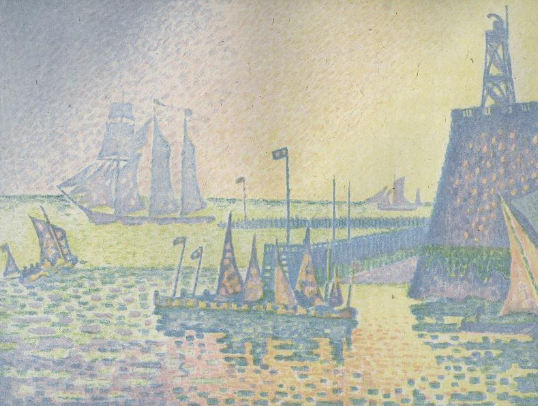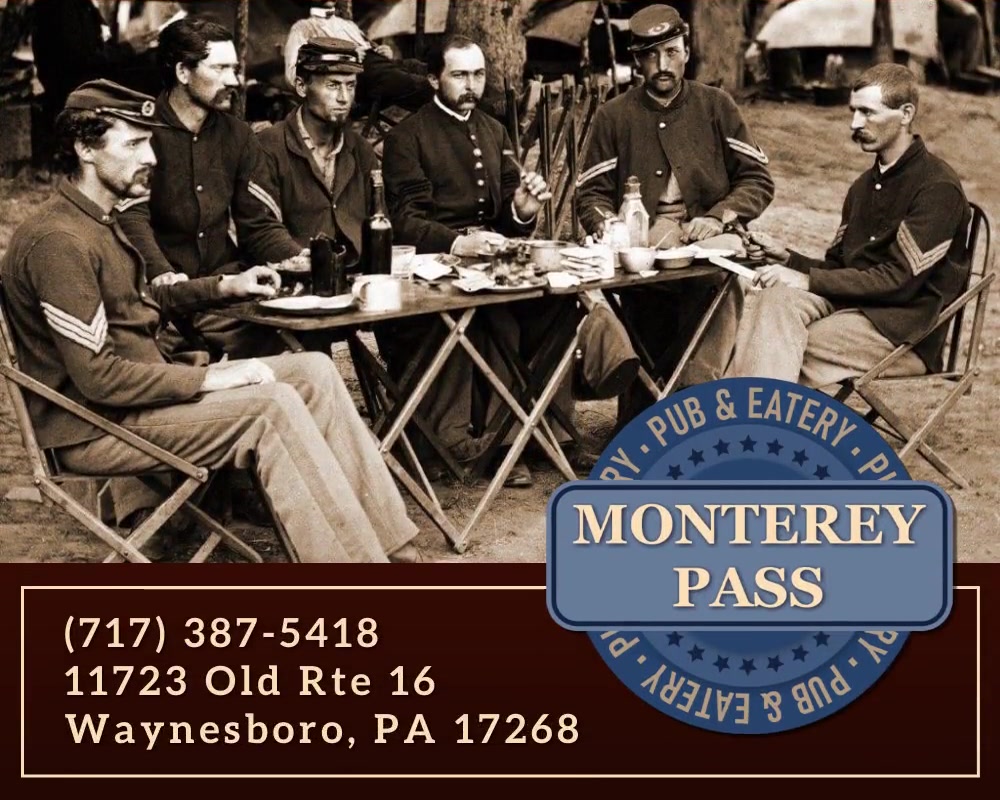HAGERSTOWN, MD – When the German-based magazine PAN was printed in 1895, one of its many missions was to give young artists a platform without restraints.
The artwork bound between its pages still has influence today. The exhibition From the Pages of PAN: Art Nouveau Prints, 1895-1900 celebrates the publication, its artists, and the work they created. The exhibition is on display from October 8, 2022, through January 29, 2023, at the Washington County Museum of Fine Arts.
From the Pages of PAN: Art Nouveau Prints, 1895‒1900 takes visitors on a journey through some of the outstanding avant-garde prints that graced the pages of PAN, an important art nouveau periodical. Featured in the exhibition are 86 brilliant lithographs, etchings, and woodcuts by renowned artists such as Auguste Rodin, Henri de Toulouse-Lautrec, Paul Signac, Georges Seurat, Käthe Kollwitz, Peter Behrens, and Aubrey Beardsley, among many others. Organized thematically, the exhibition features sections devoted to portraits, social realism, art nouveau, symbolism, post-impressionism, and landscape.
“Although most people will not have heard of PAN—the artists and artwork are a compelling mix of the familiar with names that will be new discoveries. You may come to see the Toulouse-Lautrec or Pieter Behren’s iconic art nouveau image The Kiss, and leave having fallen in love with the work of Otto Eckmann or Walter Leistikow — lesser-known artists today,” said Sarah J. Hall, museum director. “There’s so much to see and it’s fascinating time period, with a wonderful variety of styles and approaches to printmaking.”
A special preview opening will be Thursday, October 6, from 6 to 8 p.m. at the Washington County Museum of Fine Arts. Guests can get a sneak peek of the exhibition before it officially opens to the public. Cost is $15 for members and $25 for the general public. To register, contact Donna Rastelli at 301-739-5727 or [email protected].
ABOUT PAN
Otto Julius Bierbaum (1865-1910) and Julius Meier-Graefe (1867-1935) were ambitious and not yet 30 years old when they founded PAN with the support and investment of a larger group of intellectuals, art historians, and cultural commentators. Bierbaum went on to be a successful poet and novelist. Meier-Graefe, the magazine’s first art director, became one of the most influential critics and art historians of the first half of the 20th century.
PAN was named after the Greek god of flocks and pastures associated with fertility (creativity) and springtime, who also gives his name to the Greek word for all. As a publication arising out of the art nouveau movement, PAN sought to capture the energy and spirit of the international arts scene. This international ethos was not exclusive to PAN, but part of a larger spectrum of world events that included the creation of the Venice Biennale, and a year later, the revival of the Olympic games.
PAN was published at the height of rt nouveau, a movement that spread throughout Europe that was associated with young artists breaking free of 19th-century conventions and attempting to incorporate ideas of design and style into both fine and applied arts.
Originating in Belgium, art nouveau rose, crested, and subsided between about 1880 and 1920. Known as Jugendstil (“young style”) in Germany, art nouveau, like the English Arts and Crafts Movement, reacted against the Industrial Revolution and the availability of inexpensive, mass-produced goods.
An easily recognized style, art nouveau is characterized by flowing, organic, vine-like lines, as artists looked to natural forms for inspiration, rather than models of the past. Art nouveau subject matter often features sensual or erotic figures (most often female), as well as imagery derived from plants, ocean life, and insects. Because of the emphasis on incorporating art into everyday life, decorative arts and print-making both flourished in the art nouveau period. The stylized forms of this movement provided an important transition between the historicism of neoclassicism and the further abstraction to be found in modernism.
THE ARTISTS
The group of international artists who contributed to PAN trace a distinct path out of the 19th century and into the 20th. In addition to German artists, PAN published artists from France, England, Sweden, Belgium, Switzerland, Holland, and the United States.
Some artists were established international names, such as French post-impressionist Henri de Toulouse Lautrec (1864-1901); English art nouveau illustrator Aubrey Beardsley (1872-1898); German symbolist Max Klinger (1857-1920); German impressionist Max Liebermann (1847-1935); French sculptor Auguste
Rodin (1840-1917); and French neo-impressionist Paul Signac (1863-1935), while others were young advocates of art nouveau and expressionism such as Otto Eckmann (1865-1902), Peter Behrens (1868-1940), Käthe Kollwitz (1867-1945), and Henry Van de Velde (1863-1957).
The art nouveau movement that spread throughout Europe at the end of the century was associated with young artists breaking free of 19th-century conventions and attempting to incorporate ideas of design and style into both the visual and applied arts.
In Germany the movement was known as Jugendstil (literally, young style), and many of its practitioners, such as Peter Behrens. whose famous image The Kiss was published in PAN, went on to have influential careers that are more associated with the 20th century than the 19th. In 1899, when Behrens designed and built his own home the experience proved so transformative that he ended up abandoning painting and illustration for a career in architecture and design, in which his impact was felt for most of the 20th century through students and followers such as Walter Gropius, Mies van der Rohe, and Le Corbusier.
Early in PAN’s history, internationalism came into conflict with nationalism when Meier-Graefe was dismissed as art director following concerns that the publication was too influenced by French art. The print that spurred his dismissal was Toulouse-Lautrec’s Mademoiselle Marcelle Lender, En Buste, published September 1895, in PAN’s third issue.
Toulouse-Lautrec was somewhat obsessed with theater performer Marcelle Lender, and repeatedly went to watch her performances in the hit operetta Chilpéric;. After the run of the show, Lender posed for him in his studio, and he produced a total of nine lithographs based on her performances.
PAN’s print is tour de force of color lithography. Made with eight colors, each printed with a separate stone, the dominant olive green is thought to represent the tint of the newly installed electric lights at the theater. The image is now recognized as a key work encompassing many fin de siècle artistic concerns —the allure of urban nightlife, the interest in flattening form in the Japanese style, and the bold use of color and pattern that would be seen in the works of the Nabis and later the Fauves. However, at the time it was perceived by some members of PAN’s editorial board as being the ultimate in French frivolity and decadence. Publication of the print was seen as a con or farce propagated on the German
audience. History has since sided with Meier-Graefe, and the Toulouse-Lautrec lithograph is known as one of the most important images to have appeared in PAN.
Even without Meier-Graefe, French influence continued to appear in PAN, illustrated by Henri Edmond Cross’ (1856-1910) In den Champs Elysées, which was published in Vol. IV, No. 1 of PAN in 1898.
A rare example of pointillist technique used in lithography; it is one of the finest prints Cross made. Like his friend Paul Signac (1863-1935), Cross adopted a blocky pointillist style in the 1890s that was influential into the 20th century. Another beautiful color print in PAN that exemplified the pointillist technique is Signac’s Abend (Le Soir—La Jetée de Flassingue)/Evening, The Pier at Flassingue.
The innovative young artist most associated with the creation of the post-impressionist technique of pointillism is Georges Seurat (1859-1891) who had died prior to the creation of PAN but was included in the publication with a photo-reproduction of one of his works.
A lesser-known artist who appears with frequency in PAN is Otto Eckmann (1865-1902). Eckmann trained as a painter and worked in the Symbolist style, but soon became a leader in the Jugendstil (youth style) movement. Eckmann is known for his ornamental floral designs, logos, and for creating two typefaces that are still in use Eckmann and Fette Eckmann, both fonts indebted to Japanese calligraphic style.
His interest in Japanese art and his admiration of Japanese woodblock prints is obvious in the work he produced for PAN, which combine carefully delineated studies of nature with a masterful use of color and design to create images of great drama and simplicity.
The exhibition contains several works by Eckmann, including Nachtreiher (Night herons), a woodblock print, with a startling vivid orange background. Using just two colors Eckmann creates a world of atmosphere — the realistically rendered herons wade in water-stained orange by the setting or rising sun, ripples in the water and foliage at the edge of the sheet ground this in a real setting, but the birds are simply breathtakingly decorative — clearly created by a master at integrating design and subject.
The provocative and short-lived English artist Aubrey Beardsley (1872-1898) was represented in PAN by one of the few reproductive prints included in the publication. Reproductive is the term used to describe prints depicting existing prints. Beardsley first published Isolde in the London-based periodical The Studio, consequently, the print that appeared in PAN was a reproduction of the earlier print.
Interestingly, while PAN had ambitions to bring a wide variety of progressive art to its audience, the German subscribers tended to be rather conservative, and several artists, Beardsley among them, who were known for controversial or erotic subjects, were included, but with tamer compositions. Beardsley’s Isolde features many characteristics of his work—sinuous contour lines, elongated forms, and a bold use of contrast and white space (here punctuated by an attention-grabbing vermillion red curtain) it is not, however, the scandalous, sexually-charged subject matter that Beardsley was associated with.
Together the more than 80 prints in this exhibition provide a unique view into the experimentation and internationalism of the world of ideas—arts, culture, and philosophy—at the dawn of the 20th century.
This exhibition is from the collection of the Richard H. Driehaus Museum and organized by Landau Traveling Exhibitions. The Hagerstown exhibition was made possible by the generous support of Howard Kaylor; James and Melinda Marsden; Karen Spessard; and Visit Hagerstown-Washington County, MD.















